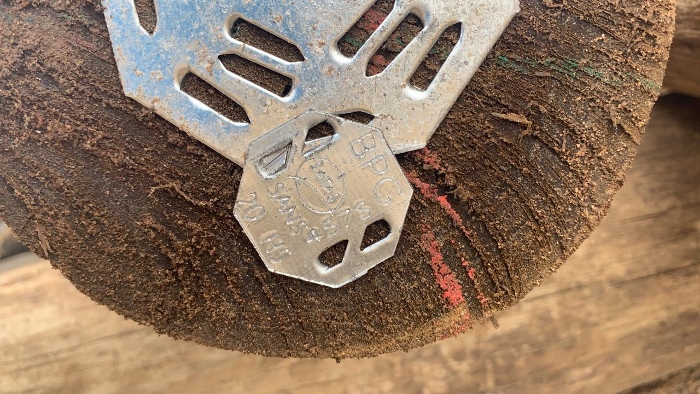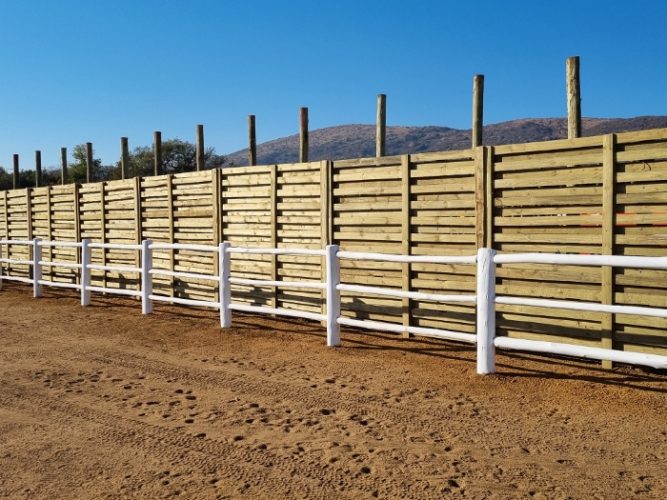You might sometimes find yourself using treated timber on your smallholding. This is because timber from South African plantation-grown pine and eucalyptus is not durable and is therefore subject to attack from fungi and termites.
There are different levels of treatment to suit the different purposes to which the timber is put.
What is treated timber?
The timber is put into a treatment vessel and the chemicals are deeply impregnated into the timber through various processes. This obtains the correct penetration depth and chemical retention for the predetermined hazard class. The main chemicals used in this country are CCA (Copper Chrome Arsenate) and creosote. CCA is a water-borne treatment and gives the timber a greenish look. Creosote is a black, oily substance, which leaves the timber pole dark brown to black.

In South Africa we have six hazard class levels of treatment. Timber will be marked according to the level of treatment it has had, ranging from HO-i for wood used inside a building, such as mouldings, ceilings, joinery and flooring boards, up to H6 in marine contexts such as jetties, slipways, retaining walls and walkways. The higher the Hazard Class, the greater the penetration and retention of the preservative specified in the SANS Standards.
Safety precautions when working with treated timber
When working with treated timber one needs to take certain safety precautions. Wear a dust mask when machining (e.g. sanding and sawing) treated wood and wear safety glasses to protect eyes from flying particles.
Work in a well-ventilated area to avoid prolonged inhalation of sawdust from treated wood.
Always wash work clothes separately.
Wear gloves when working with freshly treated wood.
Do all machining, cutting or drilling of preservative treated timber before preservative impregnation. Treat exposed areas of timber by liberally applying a suitable paint-on or brush-on remedial or supplemental preservative.
Buy the correct length of poles for planting in the ground, so that you do not need to cut them. Never plant a cross-cut end of a treated pole or post into the ground as this will expose the untreated heartwood to fungal and termite attack, resulting in premature failure.
Allow for drainage of rainwater through the timber when you plant a treated pole in the ground. Where you plant the pole on concrete at the bottom of the hole, let the concrete set before planting the pole. If you need to use concrete then let the concrete form a collar around the pole with the end of the pole protruding through the concrete. Do not enclose the planted end of the pole in the concrete, as it restricts drainage through the pole.

When should you not use treated poles?
There are certain circumstances where one should not be using treated timber:
- Do not make baby toys or furniture from treated wood as infants will chew them.
- Never use treated wood for firewood or prepare food on it. Furthermore, do not store food in direct contact with treated wood containers or make food utensils from treated wood.
- Do not make containers for storing drinking water from treated wood.
- When you make beehives, do not use treated wood where it may come into contact with honey. The recommended treatment for beehives is to hot-dip them in Waxxol.
- Do not use treated wood shavings or sawdust for animal litter or where it can become a component of animal feed.
Be very cautious when you dispose of treated wood. Do not allow treated wood cut-offs and waste to accumulate. Also, do not burn CCA treated wood off-cuts and waste, as this will allow the release of chemicals into the smoke. The ashes may also contain residual chemicals.
Dispose of treated wood off cuts and waste at a registered disposal or landfill site. To find out where the nearest disposal site is, contact the South African Wood Preservers Association here.
All images courtesy: Brits Poles.
To read more about developing infrastructure on your smallholding click here.
To subscribe to SA Smallholder click here.

